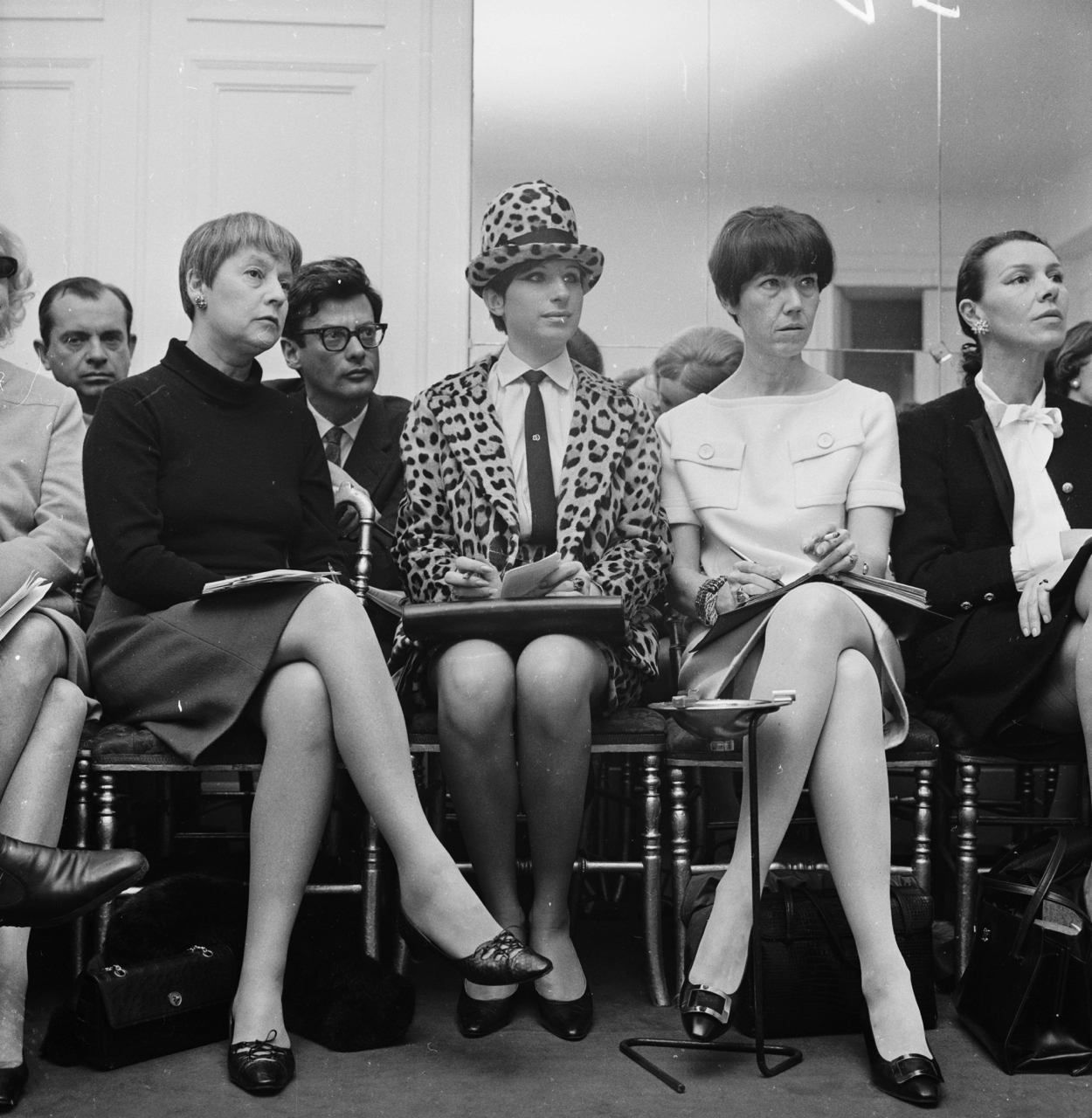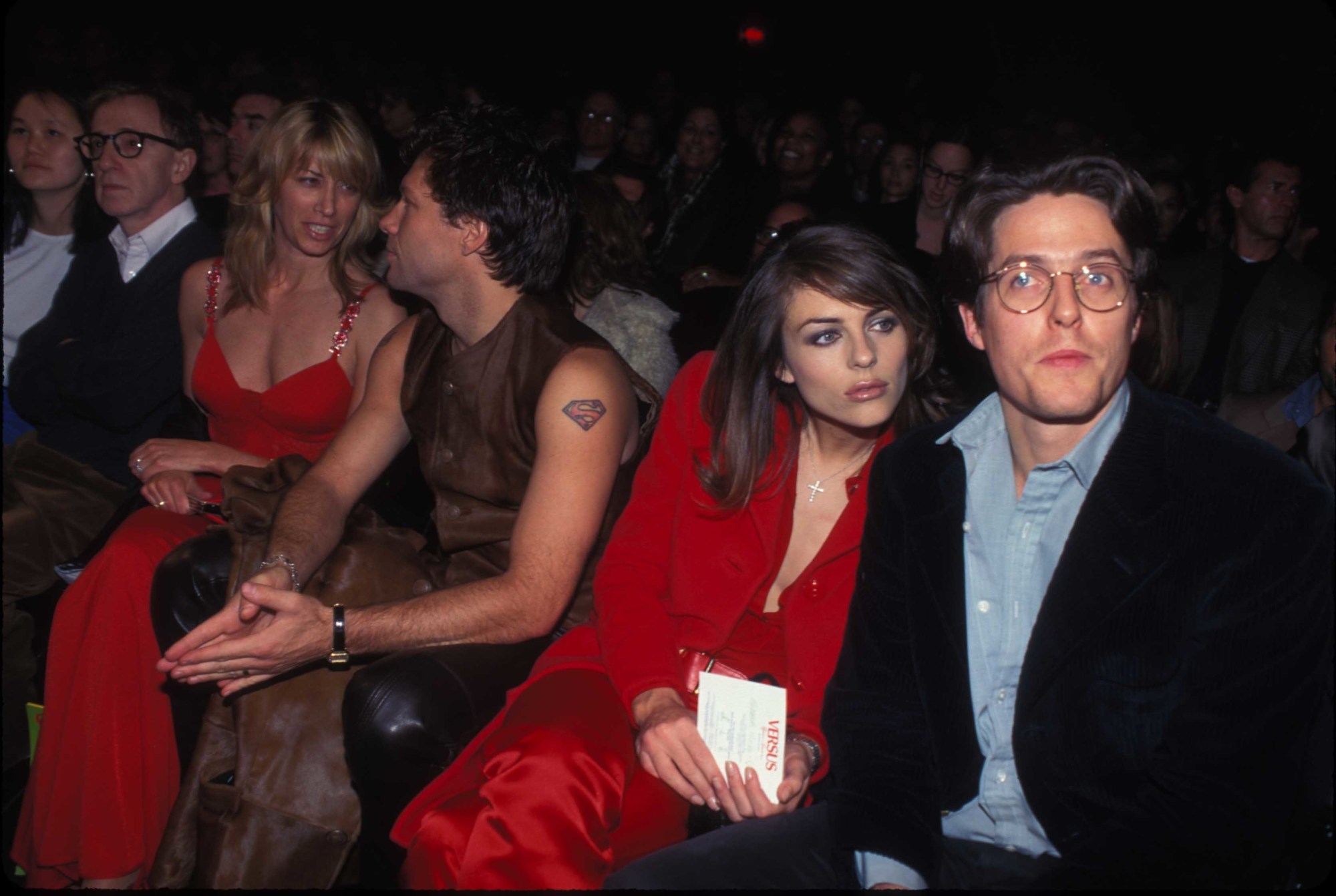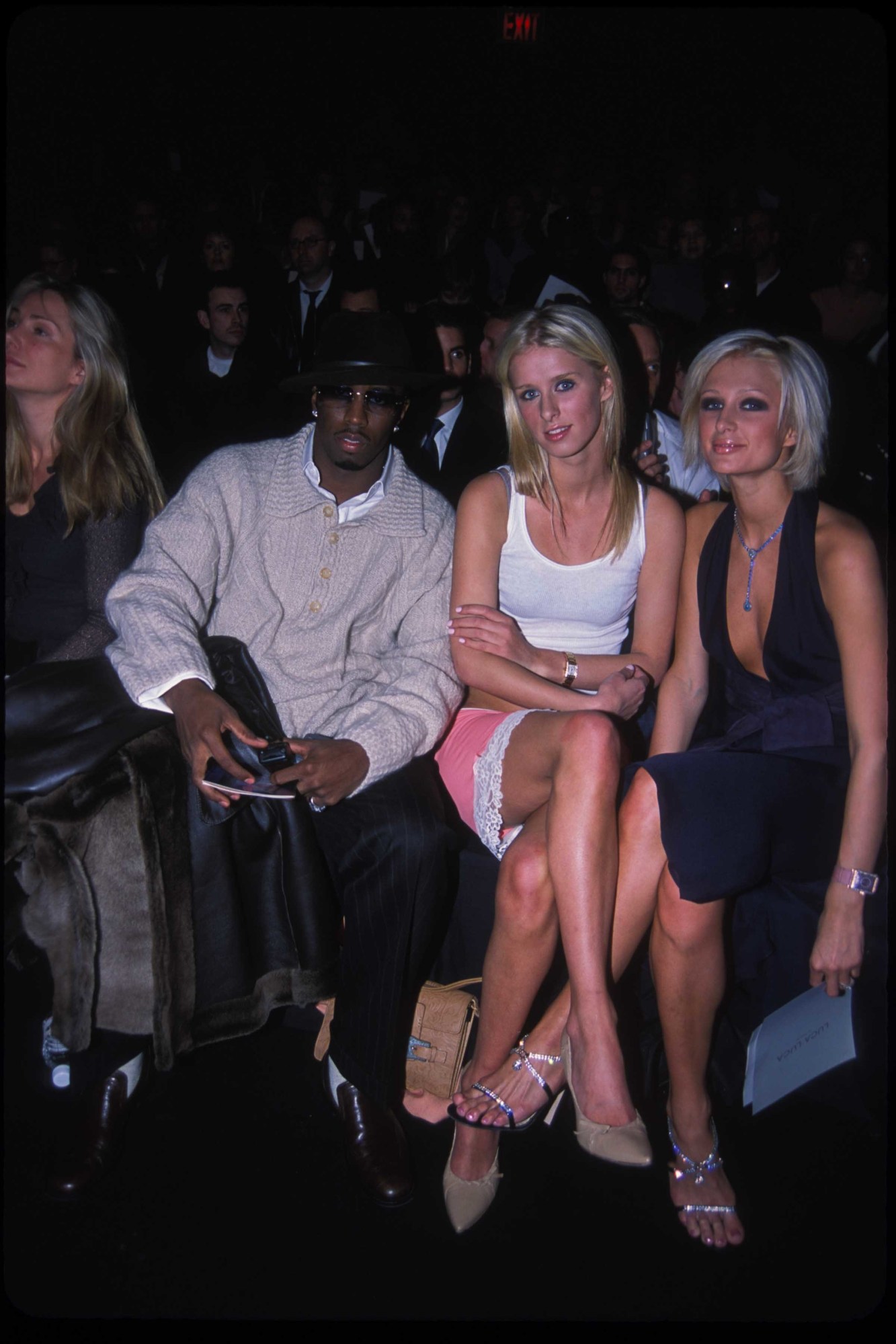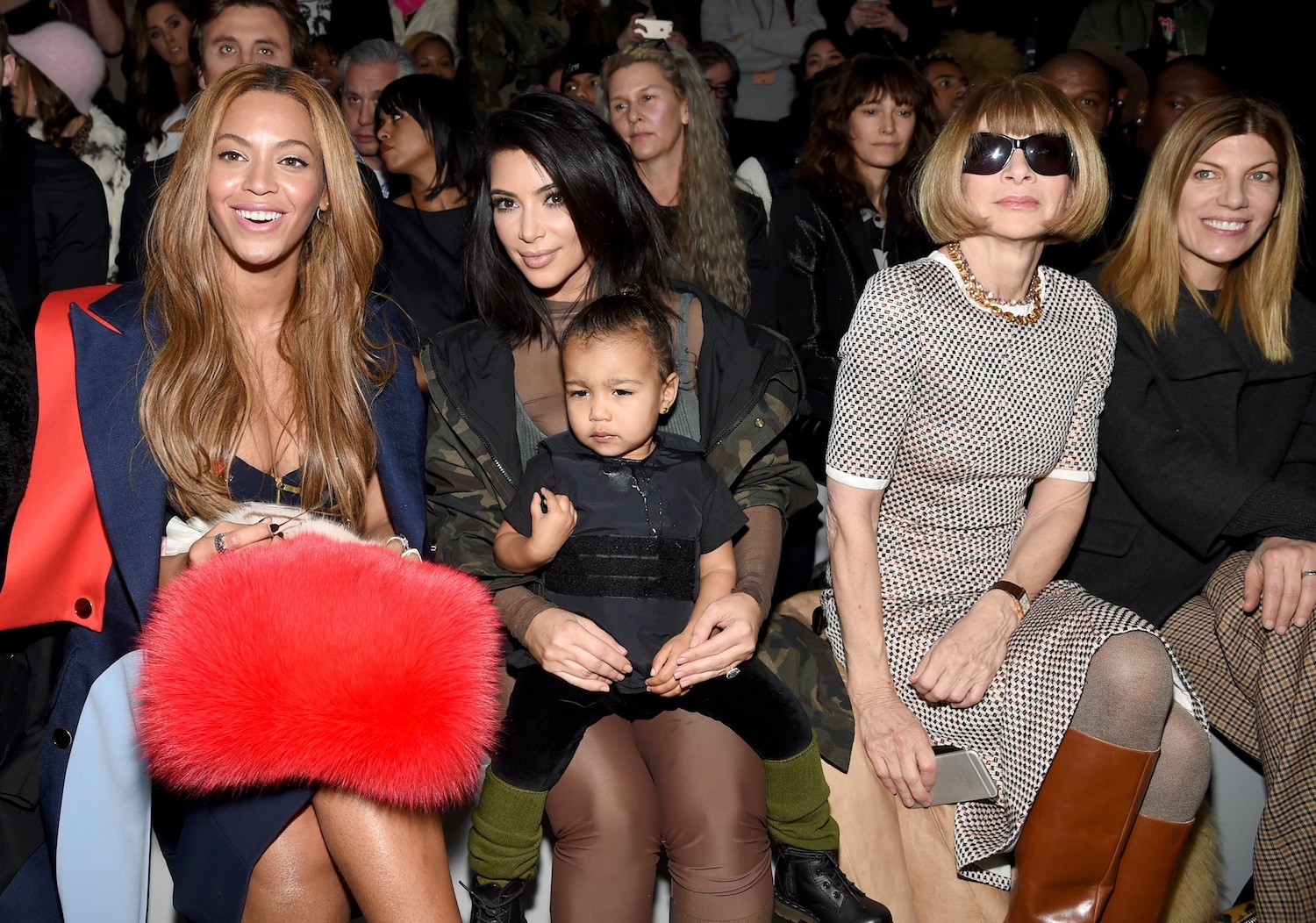Where can you find Kanye sitting next to Anna Wintour? Katy Perry chatting to Kris Jenner? Cara Delevingne whispering in Kate Moss’ ear? The front row has become the focus of the action at fashion shows, a catwalk-side gathering of celebrities and influencers, a seat to see but more importantly be seen, a carefully curated modern day tableau vivant. When Miley Cyrus, Rihanna, Jeremy Scott, Katy Perry and Kanye West showed up for the Fashion LA Awards in coordinating outfits, it nearly broke the internet.
It wasn’t always that way. The front row (or #frow as it’s been deemed) used to be a place to, well, watch the show. Sure, it was a status symbol, but it was also, more importantly, a place where you could have an unobstructed view of the clothes to decide what to buy. And although this season was perhaps less star-studded than last, we all watched on our live streams and wondered, who would be the celebrity face flooding our Instagrams within the next few hours?

Like the fashion on the runway, the front row also has a history. In the first half of the twentieth century, Parisian couture houses staged salon-like shows for socialites and retailers. American department stores like Ehrich Brothers recreated that feeling for buyers and clients on a larger scale. Actresses occasionally showed up in Paris, like Barbra Streisand sticking out like a sore thumb in leopard print at a 1966 Chanel show. The 70s and 80s grew serious, with editors and buyers considering the circuit part of their jobs. The 90s, i.e. the supermodel heyday, saw an influx of celebrities from Debbie Harry to Madonna. The 2000s introduced bloggers of all ages, and today you’ve got the front row trinity: Kim, Kanye and Rihanna.

“There was always an honoured person in the front row, someone important to the designer,” said Patrick McMullan, the well-known photographer and documenter of A-list nightlife, “but it used to be the person’s mother or sister. I think with Warhol and Halston in the 70s, the idea of the show began to change, the people at the show become more interesting. “The 70s and 80s were all about professionalism. It was an industry event, and the tool of choice was old-school notebooks. “It was the only way you could record what you were seeing,” said Stephanie Solomon, a Vice President of Lord & Taylor, “that’s a lost art. There’s something rare about that skill, you’re really dissecting what you’re looking at, you’re not counting on the camera, your eyes never come off the runway.”
Rather than the gang of street style stars and celebrities who currently command the front row, fashion had its rules to be followed then. The style was subdued. A photograph from 1977 of Grace Coddington in the front row at Balmain shows the longtime Vogue creative director blending in with a knee-length skirt. Black was de rigeur, and tastefulness reigned. Part of the reason the front row became interesting is because the media made it interesting. They created the content they coveted. “When I first started in the 90s when they did [early fashion week incarnation] 7th on 6th, I used to go out to the front row,” said McMullan, “I went into the audience to look around for people while the girls were getting dressed, but at the time there was no vehicle for those photos to appear. I just had the time to kill.” McMullen started taking photos alongside French photographer Gauthier Gallet.
Gauthier Gallet captured the industry of the 90s and 00s through his quick, candid front-row photographs. Although Gallet passed away in a tragic motorcycle accident in 2003, his photos live on in the cult-favorite book documenting a decade’s worth of front row and behind-the-scenes action, offering the masses an all-access pass to the world of high fashion. Gallet’s work captures such iconic scenes as Suzy Menkes rubbing shoulders with Delphine Arnault and Karl Lagerfeld. Most importantly, Gallet showed people where to look, and it wasn’t at the catwalk.
During McMullan and Gallet’s time, the celebrity thing blew up in a big way. “That started the late 90s.” McMullan said. “some of the PR people would tap me on the shoulder and say, make sure you get this girl… they often try to sit a powerhouse group of three. There’s a synergy between three women.”

In the early 2000s, bloggers from Susie Lau to Bryanboy joined the front row pack. “They change every show,” said Alessandro Garofalo, who currently shoots front row for style.com. “They have a new outfit and they are always dressed up, sometimes very strong, sometimes very simple, but I think it’s more to attract the attention of the people.” Just look at Tavi Gevinson’s giant hair bow that she wore to Dior’s Couture show in 2010, which blocked the runway for second row showgoers and outraged the fashion establishment. There was no attempt at camouflage there. The bloggers aren’t necessarily famous faces, but their ability to move merchandise is even greater. When your social media network has such a wide reach (Susie has 254K followers on Twitter, Bryanboy has 569K) brands start seeing dollar signs.
When you look back at Gauthier Gallet photos, you often find a sea of black, maybe the occasional leopard-print number from Paris Hilton. It was the 90s, black was in, but the front row also wasn’t necessarily a stage in itself. It’s always been tradition to wear the designer’s clothes to their show, but nowadays it’s often a product of PR. Celebrities are paid to sit front row, wearing looks straight off the runway. Allison Williams and Kate Hudson in flower print dresses made a pretty picture at Michael Kors. Was it a coincidence that Katy Perry’s spit curls matched those on the Givenchy runway? As McMullan put it: “People realised that not taking advantage of your front row is a mistake.”
So what does the future of the front row hold? We’ve already seen street style drones, so what about front row drones? The clothes-to-celebrity turn-around time is narrowing (Justin Bieber grabbed a pair of Yeezy sneakers the day of Kanye’s show) so perhaps we’ll see a front row clad in runway designs, and do away with the models altogether. Alexander McQueen was onto something when he made Kate Moss into a catwalking hologram.
This season we had first lady of New York, Chirlane McCray, at Ralph Lauren. What about first lady of the United States? There’s ample opportunity to use and be used by fashion. Look at Bethany Mota who started as a virtually unknown vlogger and interviewed the president last month to help him with outreach. It’s a topsy-turvy world of shifting power dynamics and and you can watch it all go down in the #frow.
